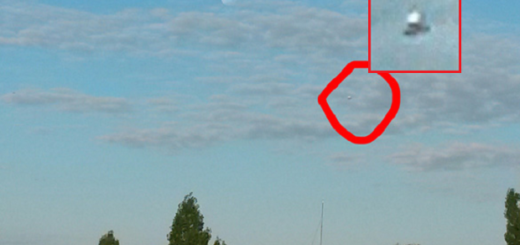Ancient Peat Bog Sheds New Light On When Sahara Turned Into A Desert – But Not Why It Happened
Scientists are trying to unlock the secrets of Sahara and understand why and when this region that had once a grassland ecosystem turned into a desert.
An ancient peat bog in Romania may shed some new light on this long-standing mystery.
Using carbon dating and chemical analysis, researchers from Northumbria University, Newcastle have shown that significant changes in dust levels occurred in Romania around 6,100 years ago, despite the climate in Eastern Europe being relatively wet at this time, indicative of an extraregional source of such dust, most likely to be from the Sahara.

This discovery is valuable new evidence of the impact changes in the climate and vegetation of North Africa may have on dust in Europe and may allow climate modellers to better understand the movement of dust and the impact of desertification, both in the past and the future.
“We know that as recently as 6,000 years ago, what is now the vast, dusty and uninhabited Saharan desert was covered in lush grassland. However, the end of this period has been subject to much discussion, both with regards to its timing and its impact on the environment,” research leader Jack Longman, a Geography PhD student at Northumbria said.
“To investigate the impact such a large climatic and environmental shift had on Europe, we analyzed the elemental makeup of a peat bog in the Eastern Carpathians, Romania. Such bogs form slowly over thousands of years, with each new layer being deposited on top of the previous, trapping the chemical, and organic signature of that precise time period within it.
Using carbon dating, the age of the bog was determined, allowing us to look back at the conditions which occurred at the time each layer formed. A core of almost 10 metres of peat sediment was recovered, representing nearly 11,000 years of deposition, Longman explained.
Results of the study showed dust from the Sahara began to land in Romania about 10,800 and 6,100 years ago.
“Between 10,800 and 6,100 years ago, the number of testate amoeba present appears to be in sync with the amount of dust recorded, indicating that the dust is likely to be related to local droughts and soil erosion. However, for the past 6,100 years the number of testate amoebae present show the bog was constantly wet, despite numerous large dust deposits during this time.
“We also saw that over the last 6,100 years the dust has contained higher levels of titanium, which suggests a major shift from a local source to one which appears Saharan in origin. The amount of dust recorded in the bog also shifts around this time, with much more deposited in the last 6,100 years than previously.” Longman said.
Between approximately 14,000 B.C. and 4,000 B.C. the climate in the Sahara was warm and humid due to higher levels of incoming solar radiation which modified the location of the African monsoon — a period known as the African Humid Period.
What is still unknown is what turned Sahara into a desert. Most scientists believe a major climate shift took place and Sahara dried up due to a change in the Earth’s orbit, which affects solar insolation, or the amount of electromagnetic energy the Earth receives from the Sun.
Another more controversial theory suggests humans turned Sahara into a desert.
Archaeologist Dr. David Wright, from Seoul National University has reached the conclusion humans destroyed Sahara’s fertile grassland. “In East Asia there are long established theories of how Neolithic populations changed the landscape so profoundly that monsoons stopped penetrating so far inland,” Dr. Wright says.
He points out evidence of human-driven ecological and climatic change has been documented in Europe, North America and New Zealand. Wright believed that similar scenarios could also apply to the Sahara.
Dr. Wright’s theory challenges the challenges the conclusions of previous studies that point to shifts in the world’s weather patterns that abruptly transformed the vegetated region into some of the driest land on Earth.



 Creators of mankind
Creators of mankind Description of “Tall white aliens”
Description of “Tall white aliens” Where they came from?
Where they came from? About hostile civilizations
About hostile civilizations The war for the Earth
The war for the Earth “Tall white aliens” about eternal life
“Tall white aliens” about eternal life Video: “Nordic aliens”
Video: “Nordic aliens” Aliens
Aliens Alien encounters
Alien encounters The aliens base
The aliens base UFO
UFO Technology UFO
Technology UFO Underground civilization
Underground civilization Ancient alien artifacts
Ancient alien artifacts Military and UFO
Military and UFO Mysteries and hypotheses
Mysteries and hypotheses Scientific facts
Scientific facts


















